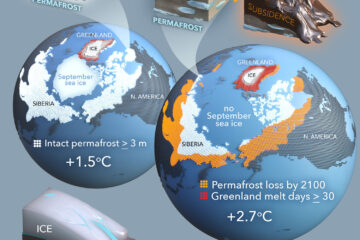Life history traits predict colonization and extinction lags of desert plant species since the Last Glacial Maximum
Variation in life-history strategies can affect metapopulation dynamics and consequently the composition and diversity of communities. However, data sets that allow for the full range of species turnover from colonization to extinction over relevant time periods are limited. The late Quaternary record provides unique opportunities to explore the traits that may have influenced interspecific variation in responses to past climate warming, in particular the rate at which species colonized newly suitable habitat or went locally extinct from degrading habitat. We controlled for differences in species climate niches in order to predict expected colonization and extinction sequences recorded in packrat middens from 15 localities in the Mohave, Sonoran, and Chihuahuan deserts of North America. After accounting for temperature niche differences, we tested the hypotheses that dispersal syndrome (none, wind, vertebrate), growth form (herb, shrub, tree) and seed mass mediated variation in postglacial colonization lags among species, whereas clonality (clonal, non-clonal), growth form, and seed mass affected extinction lags. Growth form and dispersal syndrome interactively affected colonization lags, where herbaceous species lacking long-distance dispersal mechanisms exhibited lags that exceeded those of woody, wind or vertebrate-dispersed species by an average of 2,000-5,000 yr. Growth form and seed mass interactively affected extinction lags, with very small-seeded shrubs persisting for 4,000-8,000 yr longer than other functional groups. Taller, vertebrate-dispersed plants have been shown in other studies to disperse farther than shorter plants without specialized dispersal mechanisms. We found that variation along this axis of dispersal syndromes resulted in dramatic differences in colonization rates in response to past climate change. Very small seeded shrubs may have a unique combination of long vegetative and seed bank lifetimes that may allow them to persist for long periods despite declines in habitat condition. This study indicates that readily measurable traits may help predict which species will be more or less sensitive to future climate change, and inform interventions that can stabilize and promote at-risk populations.


